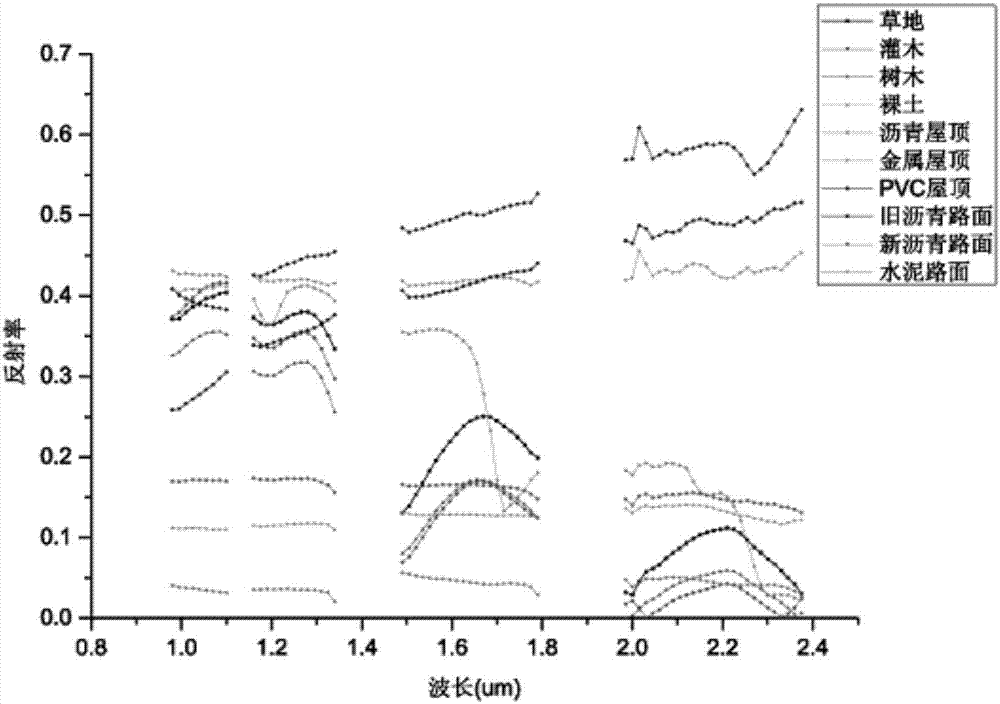Thermal infrared fusion reconstruction method based on hyperspectral image
A hyperspectral image and thermal infrared technology, applied in the field of remote sensing, can solve the problem that the high spatial resolution of thermal infrared images cannot be guaranteed, and achieve the effect of improving the spatial resolution
- Summary
- Abstract
- Description
- Claims
- Application Information
AI Technical Summary
Problems solved by technology
Method used
Image
Examples
Embodiment 1
[0036] Such as figure 1 As shown, the thermal infrared fusion reconstruction method based on hyperspectral image of the present invention comprises the following steps:
[0037] A: Select pure end members according to the spectral reflectance characteristics and thermal response characteristics of urban materials;
[0038] B: Retrieve accurate spatial abundance information of ground objects by using multi-terminal spectral hybrid analysis method;
[0039] C: Obtain a high spatial resolution surface temperature image by combining the surface temperature of representative endmembers and their spatial abundance information;
[0040] Wherein, the selection of pure endmembers described in A includes the following steps:
[0041] A1: Select representative end-members with unique spectral reflectance and surface temperature, including the selection of three main urban land cover types: vegetation, soil and impervious surface;
[0042] A2: In the actual field sampling, use the GPS ...
Embodiment 2
[0056] Such as figure 2 As shown, the method for obtaining hyperspectral image data using a hyperspectral sensor includes the following steps: In this embodiment, taking the reconstruction of an 8-meter-resolution surface temperature image using an aerial sensor SASI hyperspectral image as an example, there are 101 bands in total, and the spatial resolution The rate is 8 meters, and the width is 1.6km; to obtain the original hyperspectral image data.
Embodiment 3
[0058] Preprocess the original hyperspectral image separately to obtain reflectance data. In this embodiment, the preprocessing steps for the original SASI data are: first remove bad lines and bands, and then use FLAASH and other atmospheric correction software modules to perform reflection Rate inversion to obtain reflectance data, and finally remove the low signal-to-noise ratio, strong water vapor absorption and oxygen absorption bands, and retain 70 bands between 950-2450nm.
PUM
 Login to View More
Login to View More Abstract
Description
Claims
Application Information
 Login to View More
Login to View More - R&D
- Intellectual Property
- Life Sciences
- Materials
- Tech Scout
- Unparalleled Data Quality
- Higher Quality Content
- 60% Fewer Hallucinations
Browse by: Latest US Patents, China's latest patents, Technical Efficacy Thesaurus, Application Domain, Technology Topic, Popular Technical Reports.
© 2025 PatSnap. All rights reserved.Legal|Privacy policy|Modern Slavery Act Transparency Statement|Sitemap|About US| Contact US: help@patsnap.com



